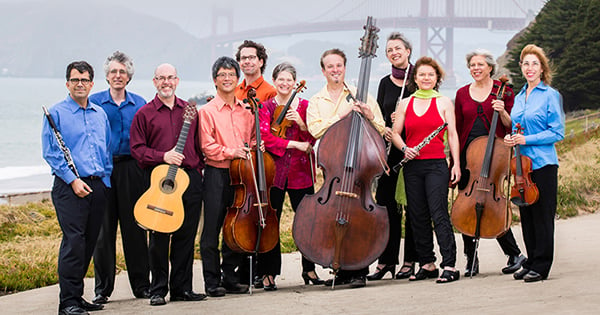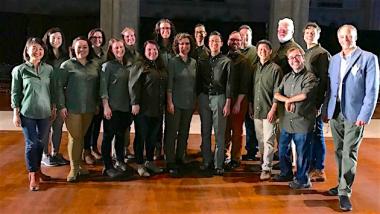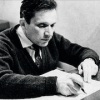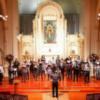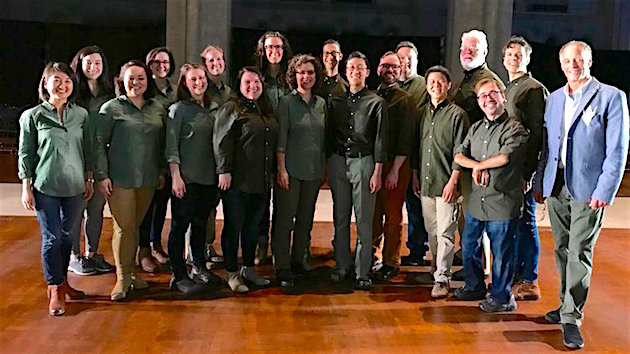
How not-old should new music sound? I’m not advocating for a dissonance quota, and so the definition of irrelevance in music remains maddeningly subjective — like obscenity, “I know it when I see it.”
But still, I saw it — and heard it — at the collaborative program by Volti chorus (directed by Robert Geary) and the Left Coast Chamber Ensemble, on Sunday at the Berkeley Hillside Club. These are two incredible groups; together, they could probably give a great performance of anything. But that doesn’t mean that the music (including three premieres) is deserving — especially the program’s most substantial work, by Gregory Spears. His The Tower and the Garden is a bizarre throwback: The texts are on hubris and destruction, but the sound is like a Christmas carol.
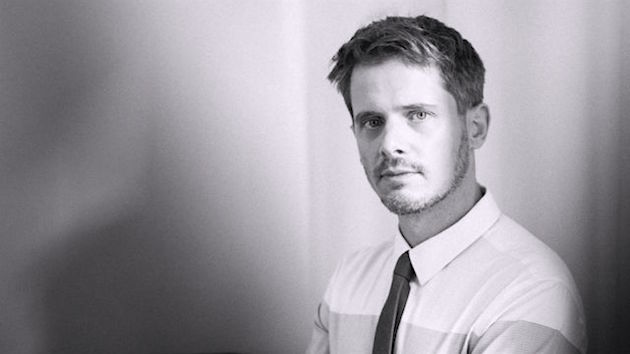
In several passages throughout the work’s four movements, the music gains some grit. The second movement’s tightly-woven fughetta on the word “rising,” with solo voices emerging from the texture, is exciting. Later on, the music is striking in a different way, through the stillness of drones. And in the third movement, the glassy, expressionless string chords are hauntingly beautiful.
Moments like these prevent the music from sounding completely like a John Rutter carol (music that I am always happy to play in December, but that is not newsworthy when imitated in this way). The rest of the time, though, it’s hymns that I feel I’ve heard before, with quartet writing that underutilizes the very capable quartet (Anna Presler, Ilana Blumberg-Thomas, Phyllis Kamrin, and Leighton Fong). The instrumental component — thin ostinato, that could in many places be replaced with piano — often feels like underscoring for a movie.
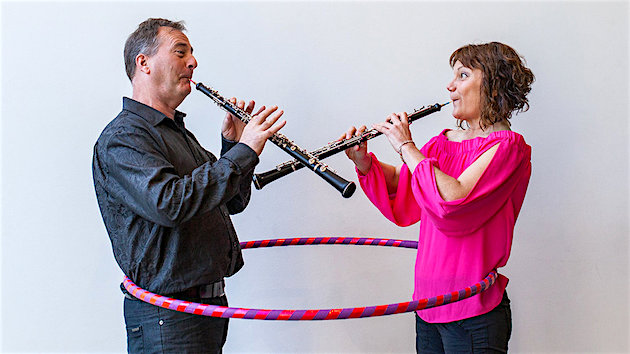
s
Spears is an accomplished writer, with previous commissions from the JACK Quartet and several major opera companies, including those in Houston, Cincinnati, and Chicago. And The Tower is an undeniably good product within its genre: easy consumption. The sections are coherent and flow well — better, in fact, than the other premieres on the program. The writing, what little of it there is for strings, is well edited, and the music, totally pretty.
But this is how the work fails its own subject matter: the warm and fuzzy sound Spears creates doesn’t serve the themes of human apathy, greed, and darkness evoked in the powerful texts (by Thomas Merton, Denise Levertov, and Keith Garebian). I tried reading the piece as sarcasm; it didn’t hold up. And so, any activism here is unappealingly lukewarm.
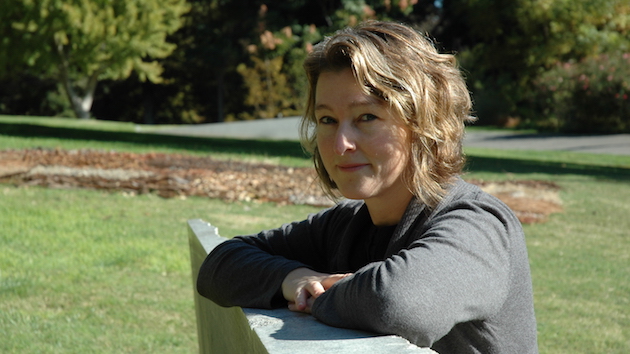
Witches, by UC Davis professor Laurie San Martin, offers more of interest. A central tenet of “chorus versus instrumentalists” results in a richly multifaceted, if somewhat flatly paced work. Evoking three girls playing make-believe, the voices sing triads and rounds, pure in sound and spirit. But the sounds of the instrumentalists — representing the witches’ potions, or maybe the general horribleness of the world toward girls — are more threatening. When the worlds converge, they create unusual harmonies and unique sonic effects.
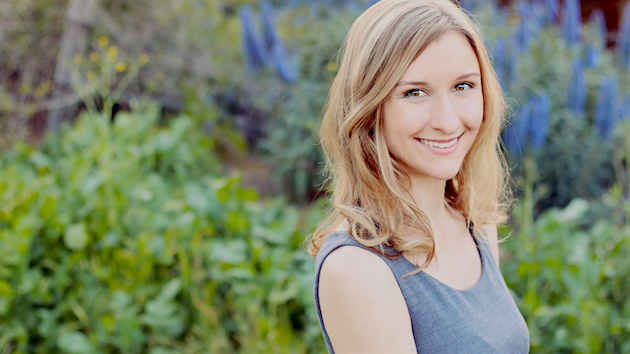
Addie Camsuzou, a Ph.D. student at UC Davis, evokes the flourishes of birds in Murmurations, for two oboes (Tom Nugent and Andrea Plesnarski) and string quartet. As a whole, the short work feels patched together in a way that’s not always satisfying — and yet, there is certainly some intriguing writing here, especially in the more rhapsodic passages and in the way that she veils the sound of the two winds.
Still, Britten’s Phantasy Quartet — his Op. 2 — sounded almost more current than any of the other works. Oboist Nugent played with well-characterized lyricism and a beautiful tone, and it was particularly magical when Fong (cello) and Kamrin (viola) let the final notes melt away.
